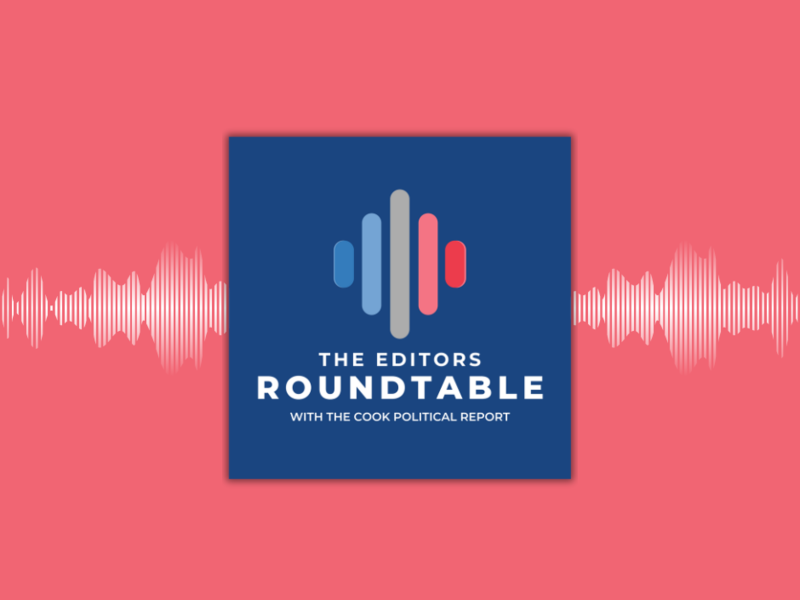
Just what are President Trump’s reelection prospects? That’s the question for which everyone has a theory but no one has a definitive answer. There are so many imponderables, including the state of the economy, the final results of Robert Mueller’s investigation, and who Democrats decide to nominate.
Not knowing the answer to any of those, let’s focus exclusively on Trump. Start with the 2016 vote, when Trump won 46 percent of the national vote and Hillary Clinton 48 percent. Trump won 30 states with 306 Electoral College votes while Clinton prevailed in 20 states (plus the District of Columbia) with 232 electoral votes. It would be logical to suggest that Democrats might need to do better than a 2.1-point national margin to be reasonably sure of a win, so maybe a 3-point popular vote win would most likely translate into the 270 electoral votes necessary to prevail.
We don’t know who Trump will face in 2020, but we are reasonably sure it won’t be Clinton. Exit polling from 2016 showed that 60 percent of voters had an unfavorable view of Trump, while 54 percent had an unfavorable view of Clinton, each the worst numbers of any nominees for their respective parties since polling began. Interestingly, 20 percent of the people who voted for Trump did so with an unfavorable view of him, just as 12 percent of those who voted for Clinton had a negative view of her. Eighteen percent had an unfavorable view of both of them. Among those who disliked both and still voted, Trump won by 20 points.
Whatever Democrats choose to do in 2020, astute or not, self-indulgent or pragmatic, it won’t be the same as 2016. The one constant is Trump, and there is a mountain of data about how people view him. Normally, midterm elections are of little value in terms of looking at the general election two years later because midterm electorates are usually about a third smaller than in presidential contests. But according to Michael McDonald of the U.S. Elections Project, turnout in 2018—50.1 percent—was the highest of any midterm since 1914; it was closer to a presidential turnout than a midterm year, so midterm exit-poll findings might be more relevant than normal.
So how large are Trump’s core base of backers and hard-core opposition? In terms of support, a reasonable facsimile would be the people who tell pollsters that they strongly approve of the job he is doing. In this year’s network exit polls, 45 percent approved the job Trump is doing, while 54 percent disapproved. The "strongly approve" number was 31 percent. In the last Fox News poll before the midterm election, 31 percent of registered voters and 33 percent of likely voters strongly approved. The last preelection NBC News/Wall Street Journal poll pegged his "strongly approve" numbers at 32 percent of registered and 35 percent of likely voters, while the ABC News/Washington Post poll had it a bit lower with 28 percent. So between 28 and 35 percent can be said to be his solid base.
What about Trump’s hard-core opposition? The exit poll showed 46 percent strongly disapproving, while in the Fox News poll it was 43 and 45 percent respectively among registered and likely voters. The NBC/WSJ poll had the numbers a bit larger, with 45 percent of registered voters and 47 percent of likely voters strongly disapproving.
Since the vast majority of potential Democratic contenders are still relatively unknown nationally, head-to-head polls are meaningless at this point. The only reelection polling I have seen regularly was conducted by Selzer & Company for Grinnell College. (Ann Selzer is the long-time pollster for The Des Moines Register and did the polling for Bloomberg News for many years. She is extremely highly regarded in the business.) In the Nov. 24-27 Grinnell poll, the 828 likely 2020 election voters were asked, “If a vote for president of the United States were held today, would you definitely vote to reelect President Trump, consider someone else, or definitely vote to elect someone else, or would you not vote?” In this survey, 32 percent of likely voters said they would definitely vote to reelect Trump, 2 points more than in the September poll; 41 percent in the new poll and 43 percent in the September poll said they would definitely vote to elect someone else; and 18 percent in both surveys said they would consider voting for someone else.
These numbers match up well with the "strong approve" and "strong disapprove" numbers. It doesn’t mean that Trump has to run the table among those voters who would consider someone else, but he would definitely need to win the lion’s share of them. The bottom line is that while Trump certainly could win reelection, he’s got his work cut out for him.
This story was originally published on nationaljournal.com on December 11, 2018










Subscribe Today
Our subscribers have first access to individual race pages for each House, Senate and Governors race, which will include race ratings (each race is rated on a seven-point scale) and a narrative analysis pertaining to that race.